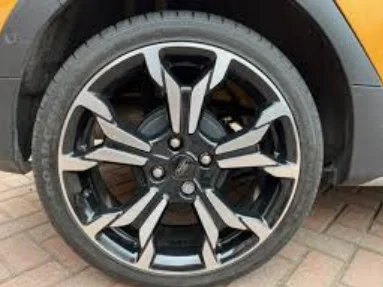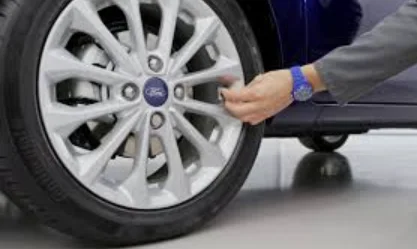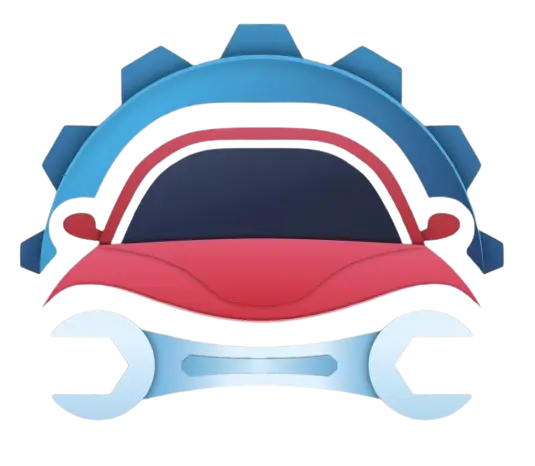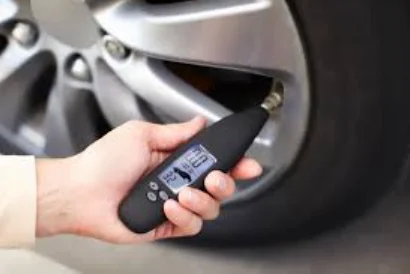When it comes to maintaining your Ford Fiesta 2012, one often overlooked yet crucial aspect is proper tyre pressure.
The right tyre pressure not only ensures a smoother ride but also contributes to fuel efficiency, handling, and overall safety.
In this comprehensive guide, we’ll delve into the importance of maintaining the correct tyre pressure for your Ford Fiesta 2012 and provide valuable insights to keep your ride rolling smoothly.
Why Tyre Pressure Matters
- Safety First: Adequate tyre pressure is essential for optimal traction, especially during adverse weather conditions. Properly inflated tyres enhance your vehicle’s stability, reducing the risk of accidents.
- Fuel Efficiency: Maintaining the recommended tyre pressure can positively impact fuel efficiency. Under-inflated tyres increase rolling resistance, forcing the engine to work harder and consume more fuel.
- Tyre Longevity: Incorrect tyre pressure can lead to uneven wear, reducing the lifespan of your tyres. Regularly checking and adjusting the pressure helps in preserving the overall health of your tyres.
What’s the Right Pressure for Ford Fiesta 2012?
Ford recommends a tyre pressure range of 32-35 PSI (pounds per square inch) for your 2012 Fiesta. But wait, there’s more! This magic number can fluctuate depending on several factors:
- Load: A fully-loaded Fiesta might require slightly higher pressure for optimal handling.
- Temperature: Hot weather expands air, so consider increasing pressure slightly during summer months.
- Driving Conditions: High-speed driving might necessitate a slight pressure boost for stability.

Finding the Sweet Spot: Checking and Adjusting Pressure
Checking your tyre pressure regularly is as crucial as topping up your fuel. Here’s how to do it like a pro:
- Invest in a reliable tyre pressure gauge.
- Remove the valve cap and press the gauge firmly onto the valve stem.
- Note the reading and compare it to the recommended pressure.
- If needed, inflate or deflate your tyres using a pump at a gas station or tyre shop.
- Remember to replace the valve caps!
| Engine | Tyre size | Front pressure | Rear pressure | Front loaded pressure | Rear loaded pressure |
| 1 | 195 45 R16 80H | 36 | 26 | 41 | 46 |
| 1 | 195 50 R15 82H | 33 | 26 | 38 | 46 |
| 1 | 195 50 R16 84H | 33 | 26 | 38 | 46 |
| 1 | 195 55 R15 85H | 33 | 26 | 38 | 46 |
| 1 | 205 40 R17 80H | 36 | 26 | 41 | 41 |
| 1.0 EcoBoost | 205 40 R17 84V XL | 39 | 28 | 41 | 36 |
| 1.2 | 175 65 R14 82T | 33 | 26 | 38 | 46 |
| 1.2 | 195 45 R16 80H | 36 | 26 | 38 | 46 |
| 1.2 | 195 50 R15 82T | 33 | 26 | 38 | 46 |
| 1.2 | 195 50 R16 84H | 30 | 26 | 38 | 38 |
| 1.2 | 195 55 R15 85T | 33 | 26 | 38 | 46 |
| 1.2 | 205 40 R17 80H | 36 | 26 | 41 | 41 |
| 1.3 8V | 175 65 R14 82T | 30 | 26 | 36 | 41 |
| 1.3 8V | 195 45 R16 80H | 30 | 29 | 33 | 38 |
| 1.3 8V | 195 50 R15 82H | 29 | 26 | 36 | 41 |
| 1.4 | 195 45 R16 80H | 33 | 26 | 38 | 38 |
| 1.4 | 195 50 R15 82T | 33 | 26 | 38 | 46 |
| 1.4 | 195 50 R16 84H | 33 | 26 | 38 | 46 |
| 1.4 | 195 55 R15 85T | 33 | 26 | 38 | 46 |
| 1.4 | 205 40 R17 80H | 36 | 26 | 41 | 41 |
| 1.4 LPG | 195 50 R16 84T | 30 | 26 | 38 | 46 |
| 1.4 LPG | 195 55 R15 85T | 30 | 26 | 38 | 46 |
| 1.6 16V | 175 65 R14 82H | 30 | 26 | 36 | 41 |
| 1.6 16V | 195 45 R16 80V | 30 | 29 | 33 | 38 |
| 1.6 16V | 195 50 R15 82H | 29 | 26 | 36 | 41 |
| 1.6 ST Turbo | 205 40 R17 84W XL | 36 | 26 | 41 | 41 |
| 1.6 Ti-VCT Sport | 195 45 R16 84V XL | 36 | 26 | 41 | 46 |
| 1.6 Ti-VCT Sport | 205 40 R17 84V XL | 36 | 26 | 41 | 41 |
| 2.0 ST 150 | 195 45 R16 80V | 32 | 29 | 33 | 38 |
| 2.0 ST 150 | 205 40 ZR17 XL | 32 | 29 | 36 | 41 |
Bonus Tip: Don’t forget the spare! Check and adjust its pressure whenever you check the others.
The Benefits of Proper Pressure: Why It Matters
Maintaining the right tyre pressure isn’t just about good habits; it brings a bounty of benefits:
- Safety: Properly inflated tyres ensure optimal grip and handling, minimizing the risk of accidents.
- Fuel Efficiency: Under Inflated tyres increase rolling resistance, leading to higher fuel consumption.
- Tyre Life: Properly inflated tyres wear evenly, extending their lifespan and saving you money.
- Smoother Ride: Say goodbye to bumpy journeys and enjoy a comfortable driving experience.

How to Check and Adjust Tyre Pressure:
- Use a reliable tyre pressure gauge to measure the pressure when the tyres are cold.
- Locate the tyre valve stem and remove the cap.
- Press the gauge onto the valve stem to get a pressure reading.
- If the pressure is too low, add air until it reaches the recommended level. If it’s too high, release some air.
- Repeat the process for all four tyres, including the spare.
Conclusion
Ensuring the correct tyre pressure for your Ford Fiesta 2012 is a simple yet effective way to guarantee a safe and smooth driving experience.
Regular checks and adjustments contribute not only to your safety but also to the longevity and efficiency of your vehicle.
FAQs
How often should I check my tyre pressure?
- It’s recommended to check your tyre pressure at least once a month and before long journeys.
Can I use the tyre pressure listed on the tyre sidewall?
- No, the tyre pressure on the sidewall is the maximum allowable pressure, not the recommended pressure for your vehicle.
What if I’m carrying heavy loads or towing?
- In such cases, refer to your vehicle’s manual for adjusted tyre pressure recommendations based on the load.
It’s crucial to maintain the right pressure for optimum safety and performance.

